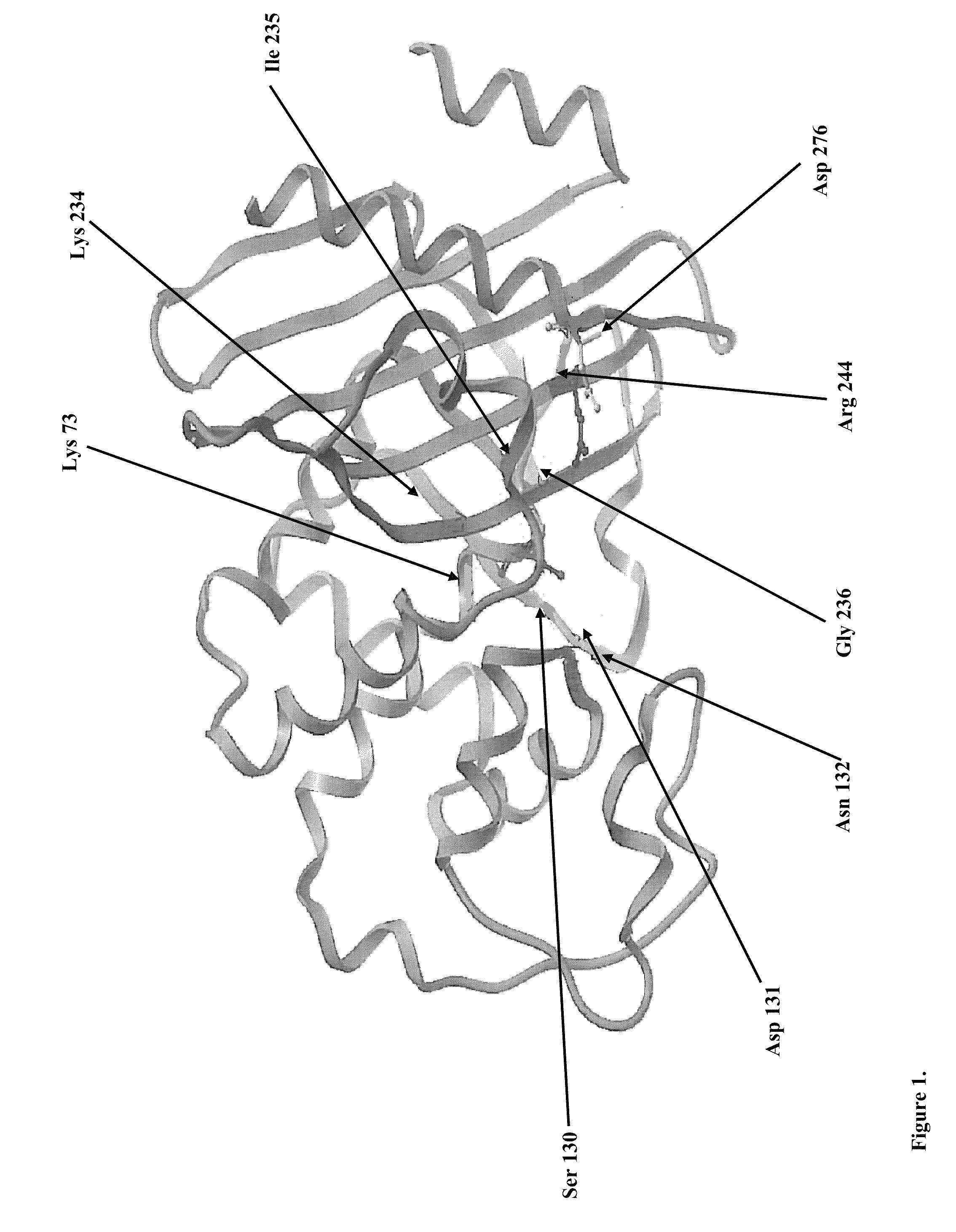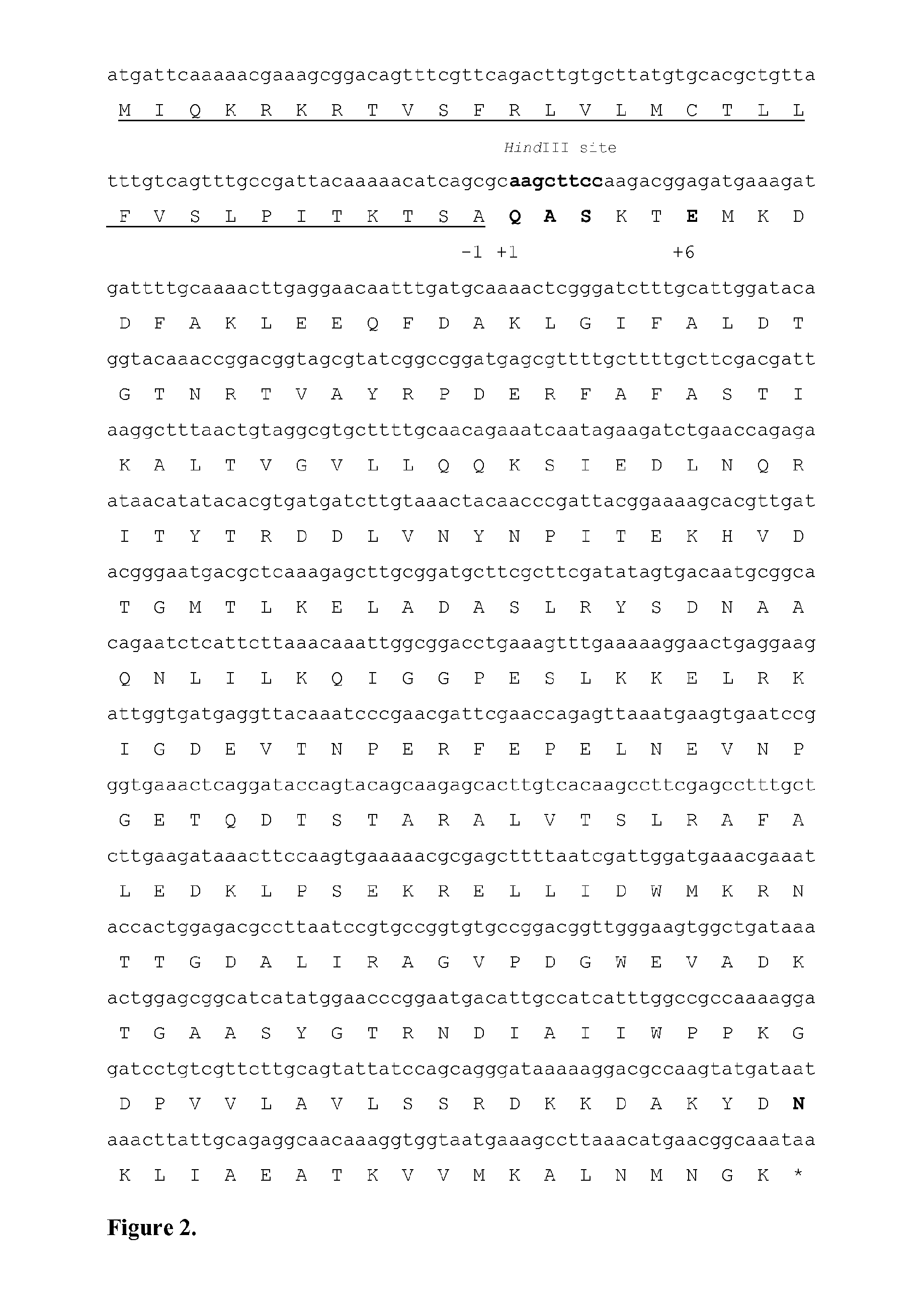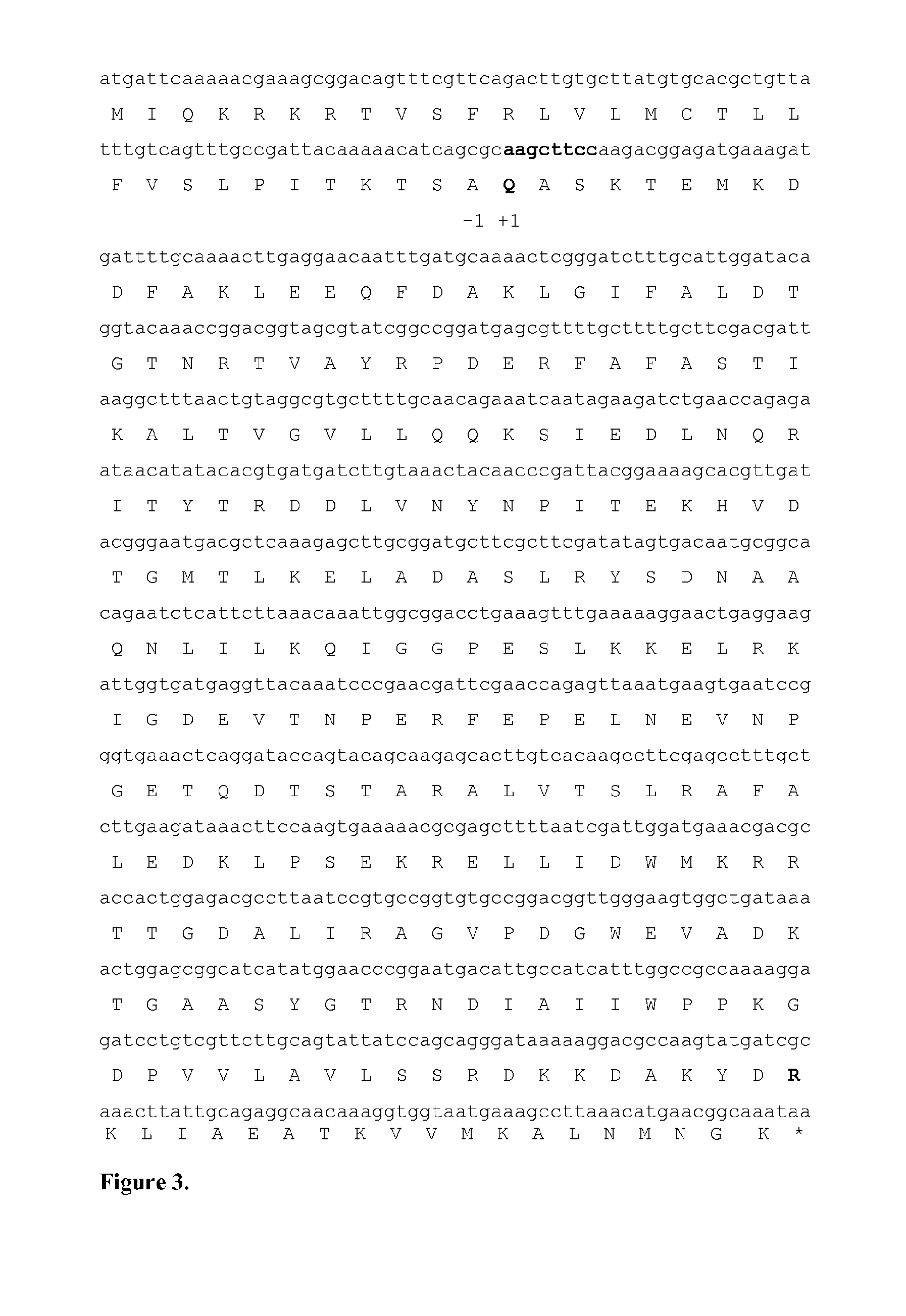Modified beta-lactamases and methods and uses related thereto
a technology of beta-lactamases and modified beta-lactamases, which is applied in the field of new recombinant beta-lactamases, can solve the problems of high solubility of substances, limited capacity of p1a enzymes to inactivate, and resistance to antibiotics
- Summary
- Abstract
- Description
- Claims
- Application Information
AI Technical Summary
Benefits of technology
Problems solved by technology
Method used
Image
Examples
example 1
Construction of D276N and D276R Mutant Enzymes
[0114]Bacillus licheniformis beta-lactamase D276N and D276R mutants were constructed by splicing-by-overlap extension mutagenesis (SOE) using the pRSH10 plasmid encoding P1A beta-lactamase as a template for the initial PCR reactions according to previously published procedures (Horton R. M. et al., 1989, Gene 77:61-68). Primers were designed to provide two different PCR products with a region of common sequence. Fragments were then fused in a subsequent PCR amplification by aid of overlapping regions. The desired mutations were achieved by using mutagenic primers in initial PCR.
[0115]For the D276N mutant, mutation was made at the desired position in wild type gene, converting a GAT codon to a AAT codon. The primers utilized in the first PCR amplifications are presented in Table 2. The size of amplified fragments in the first PCR was 800 nt and 220 nt which have a 21 nt long overlapping region.
[0116]
TABLE 2 Oligonucleotide PCR primers. Co...
example 2
Nucleotide Sequence of D276N Mutant Beta-Lactamase Gene (penP)
[0120]The expression construct was isolated from a positive clone and the insert was subjected to DNA sequencing. The complete nucleotide sequence and deduced amino acid sequences of D276N mutant beta-lactamase gene revealed that a substitution of Asp for Asn has occurred correctly at the desired codon (FIG. 2). Furthermore, the DNA sequence of D276N mutant beta-lactamase gene revealed in frame fusion between nucleotide sequence encoding a 31 amino acid long signal sequence of Bacillus amyloliquefaciens alpha amylase, the HindIII cloning site and the complete sequence of D276N mutant gene. The signal peptidase is predicted to cut the peptide bond between alanine (A) at position of −1 and glutamine (Q) at position of +1. The mature D276N beta-lactamase possesses an NH2-terminal extension of a NH2-QAS-tripeptide derived from the Hind III cloning site in the expression construct. Hence, based on the deduced amino acid sequen...
example 3
Nucleotide Sequence of D276R Mutant Beta-Lactamase Gene (penP)
[0121]To confirm the desired substitution of aspartic acid to arginine at position 276 (Ambler classification) in the Bacillus licheniformis beta-lactamase gene, the expression construct was isolated from a positive clone and the nucleotide sequence of the insert was sequenced similar to example 2. According to the obtained nucleotide sequence, the deduced amino acid sequence contains the desired D276R substitution and the mature D276R mutant enzyme is comprised of 268 amino acid residues (FIG. 3).
PUM
 Login to View More
Login to View More Abstract
Description
Claims
Application Information
 Login to View More
Login to View More - R&D
- Intellectual Property
- Life Sciences
- Materials
- Tech Scout
- Unparalleled Data Quality
- Higher Quality Content
- 60% Fewer Hallucinations
Browse by: Latest US Patents, China's latest patents, Technical Efficacy Thesaurus, Application Domain, Technology Topic, Popular Technical Reports.
© 2025 PatSnap. All rights reserved.Legal|Privacy policy|Modern Slavery Act Transparency Statement|Sitemap|About US| Contact US: help@patsnap.com



